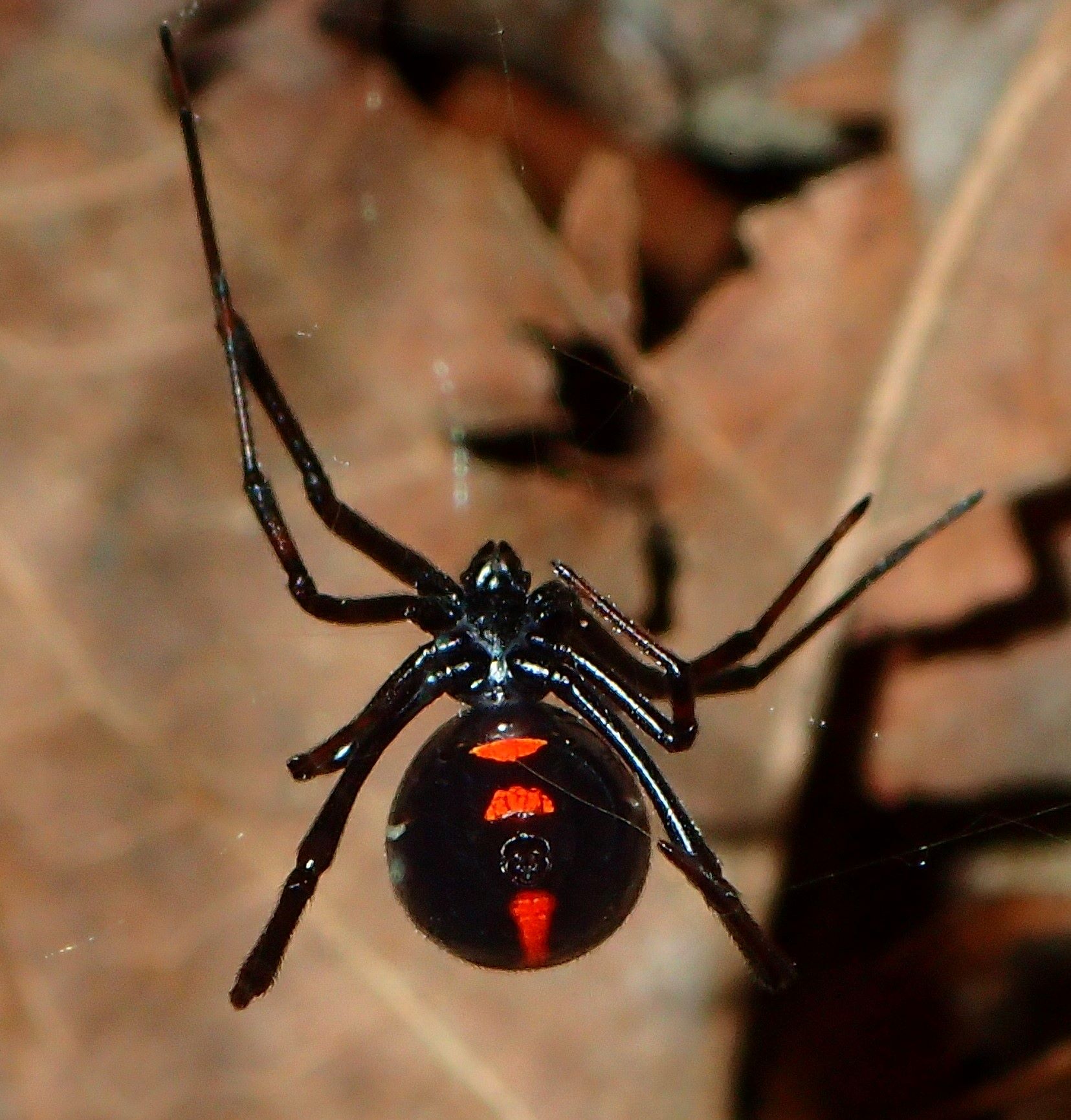
Speed-dating the Spiders – Black Widows
Howdy, BugFans,
For years, BugFan Tom has sent pictures from the Deep South of Black widow spiders that he encounters while conducting research in southern thickets in the dead of night. Thanks for the pictures, Tom.
The first thing you should know about Black widows is that they need better PR. Widow spiders are so-named because the female (allegedly) eats the male after mating. It’s called “sexual cannibalism,” and the protein meal is supposed to boost the chances of successful egg-laying. But, this is a behavior that was first observed in the lab, where the male had few escape options, and it’s suspected that it happens far less frequently in the wild (similar laboratory observations have given the Praying mantis an equally bad rap). Courtship is a tricky business for male spiders, and sexual cannibalism is known from other groups of spiders besides the widows.
Widow spiders are in the Cobweb/Tangleweb spider family Theridae and in the genus Latrodectus, the widows/true widows (Latrodectus means “biting in secret”). There are about 35 species worldwide, with 5 in North America (the Northern, the Southern, and the Western, all called “black widows,” plus the Red widow, and the non-native Brown widow). As their names suggest, they’re distributed across the continent https://bugguide.net/node/view/1999/data. Climate change is helping them move north.
They are considered to be fairly common spiders, but they stay out of sight in dark areas under rocks, in woodpiles, in crevices and holes, tree stumps, in outbuildings, animal burrows, unused grills, etc. – usually near the ground. They are not generally an indoor spider but will come in out of the cold.
Latrodectus spiders are the largest spiders in their family – females are about a half-inch long (an inch and a half, including legs), and males are about half that size https://bugguide.net/node/view/34659/bgimage. Widow spiders are famous for the red, hourglass-shaped markings on the underside of the female’s abdomen, but the hourglass may be incomplete, split, or even absent. Males have a variety of spots along the midline, and immatures are pale before they morph into male coloration and then into their adult patterns. They are also called “comb-footed” spiders because their feet are covered with bristles that they use to handle the silk when they’re wrapping their prey.
Instead of a tidy, platter-shaped orb-web, widows spin a strong, messy, sticky, three-dimensional web https://bugguide.net/node/view/1130899 with a dense retreat at one side where the spider hides in the daytime. A hungry spider will build a stickier web, and a satiated spider a web with more internal structure. Widows eat a variety of invertebrates (size seems to be no object https://bugguide.net/node/view/109318/bgimage), including other spiders; they have a taste for red fire ants, and they may even eat small vertebrates that get stuck in their web. They inject a venom to subdue their prey (more about that in a sec), and then an enzyme to liquefy it.
Widows are targeted by several species of solitary wasps that use them to provision their egg chambers, and they’re also eaten by scorpions, centipedes, and mantises. Their red markings warn birds that taking on a widow would be a bad idea, though their toxins are harmless when ingested.
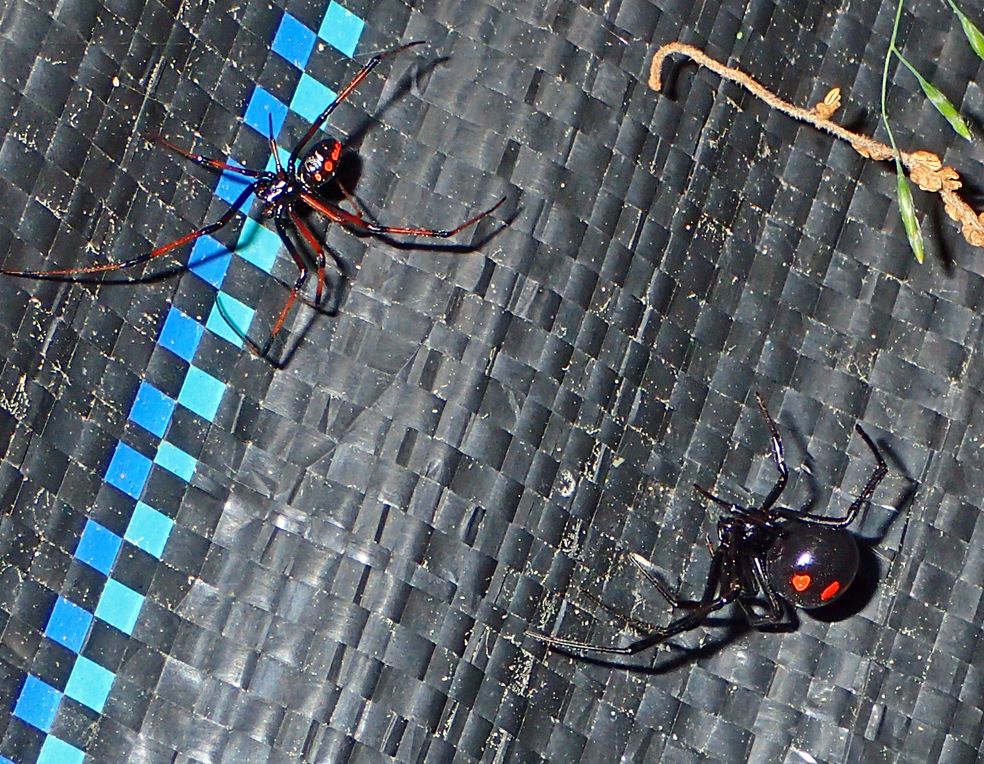
Males wander the landscape in search of females, and females stick pretty close to their webs. When he finds a female, he plucks the strands of her web to ascertain that she is the same species and to introduce himself, and he shakes his abdomen to produce vibrations. He may sever portions of her web to cut off her potential escape routes (alternatively, some researchers think that the portions of her web that he cuts and bundles up are the pheromone-laden bits, so he’s making her web less noticeable to other males). Even then, he advances with caution, informed by chemicals in the web that tell him whether she is well fed (and therefore approachable) or hungry.
Females make egg sacs that contain about 250 eggs https://bugguide.net/node/view/2213427/bgimage, and they can produce as many as nine sacs per summer (she has a much longer lifespan than he does). The eggs within the sac, which is suspended in her web and guarded by Mom, hatch in three to four weeks, but sibling cannibalism is rampant immediately after the spiderlings emerge, and even though they balloon away quickly, only a small fraction survive.
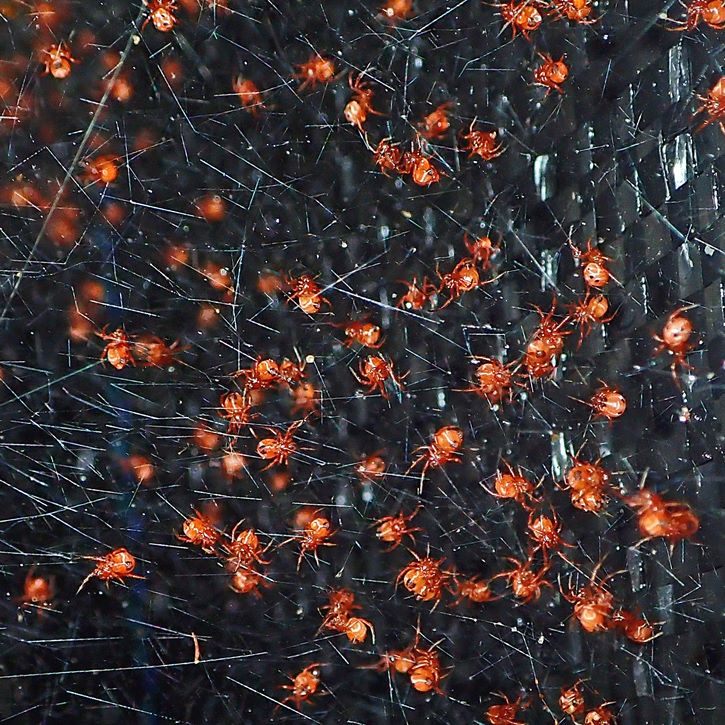
Two species of Black widow, the Southern and the Northern, inhabit the eastern half of the continent, and because of their overlapping ranges and similar habits, a lot of publications lump them together.
SOUTHERN BLACK WIDOWS or Hourglass spiders (Latrodectus mactans) are found as far north as Illinois and New York State and even southern Canada https://bugguide.net/node/view/26336/data. Shiny black, with a full hourglass pattern – two joined, red triangles with the rear triangle wider than the front one – they’re considered the “classic” Black widow https://bugguide.net/node/view/2035680/bgimage. They also have red markings on the top of the abdomen https://bugguide.net/node/view/731853/bgimage. Males have some spots on their abdomens https://bugguide.net/node/view/710792/bgimage.
Southern black widows are declining in the South, and the likely suspect is the non-native (from Africa) Brown widow spider (Latrodectus geometricus). In lab situations, when Brown widows were offered an array of other spiders to eat, their top pick was Southern black widows. Brown widows also have a higher reproductive rate and more potent venom than native widows, though they inject a smaller amount of it, and they are less likely to bite.
NORTHERN BLACK WIDOW – Yes, Black widows are native to God’s Country, though they’ve rarely seen. They’ve been recorded in fewer than 10 counties, mostly near Lake Michigan, with its more moderate climate. The same species is at home in the South and was photographed there by BugFan Tom. Northern black widows (Latrodectus variolus) are found over the eastern half of the continent from Texas to Ontario, and they’re more common in the northern parts of their range https://bugguide.net/node/view/26421/data.
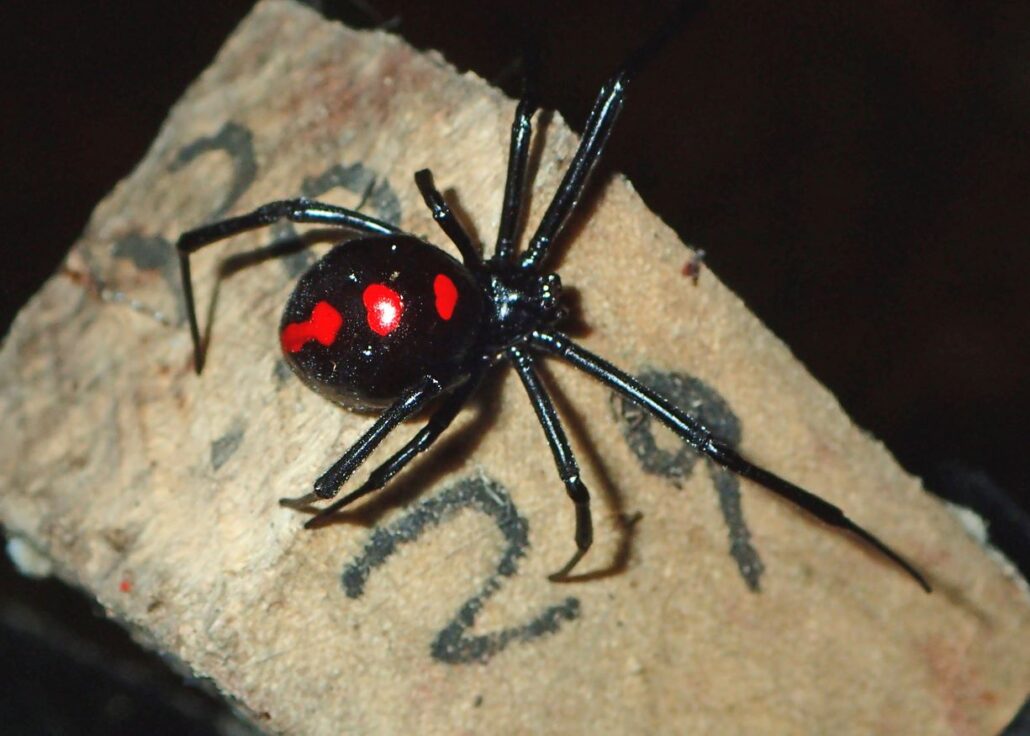
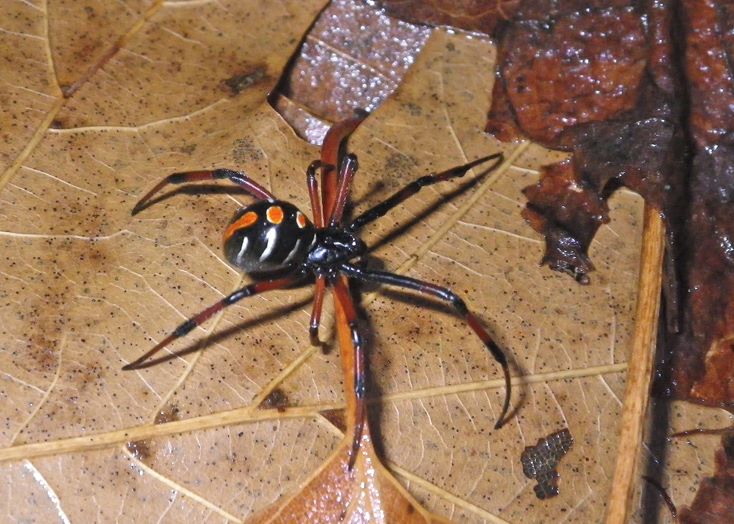
In this species, the signature hourglass markings are likely to be interrupted, with a gap between the top and bottom trapezoid, or with one side larger or absent, and there’s a row of red spots on the top side of the abdomen. Males have four pale bands on each side of the abdomen. The Northern black widow is slightly smaller than its southern cousin, and slightly less venomous.
ABOUT THAT BITE
Widows seldom bite people (about 2500 reports a year) – they would rather flee or play dead than fight, and most bites occur when people poke their hands into dark places or when a spider gets squished against a person. While they are not the most toxic spider on earth, the venom of a female widow spider (males and immatures are harmless) is 15 times more toxic than that of a rattlesnake. They don’t inject very much venom per bite, but even that small amount will get your attention. Their venom contains a neurotoxin called latrotoxin (named for the genus) that rarely causes death but does cause a syndrome called Latrodectism, whose symptoms include some muscle paralysis, intense pain and abdominal cramping, tachycardia, and other unpleasantness that may last for three to five (or more) days. It’s recommended that people who get bitten, especially children, the elderly, and the pregnant, call their doctor or hospital – there’s an antivenom.
Says Wikipedia – “In 1933, a University of Alabama medical faculty, Allan Blair conducted an experiment on himself to document the symptoms of a black widow bite, and to test whether someone can build immunity after being bitten15 -. The effects of the bite were so painful and harsh that Blair failed to complete the experiment and did not follow through with being bitten a second time.”
[Esoteric Fact of the Day: (because the BugLady’s youngest child once called her an “esoterrorist”) the old (1800’s) terms were venin and antivenin, but in 1981, the World Health Organization standardized venom and antivenom as the preferred terms in the English-speaking world.]
As always, mind where you stick your fingers and toes.
Kate Redmond, The BugLady
Bug of the Week archives:
http://uwm.edu/field-station/category/bug-of-the-week/
